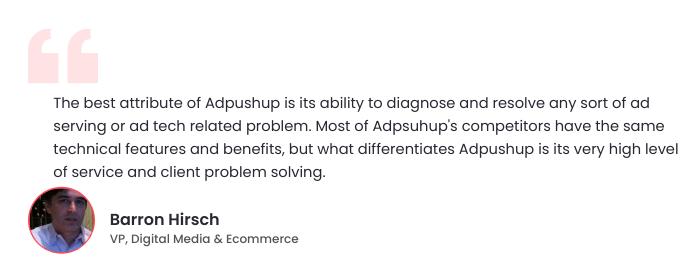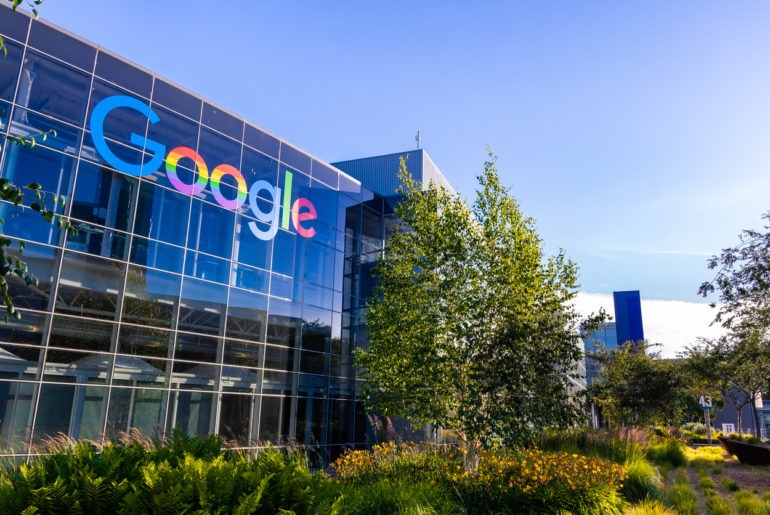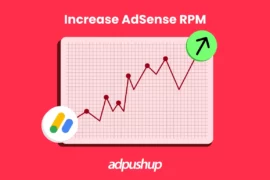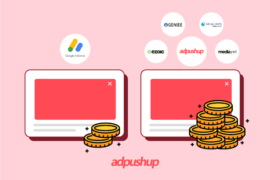The most common method of monetizing a website is through Google AdSense. Read the blog for more information on AdSense best practices.
Most web publishers use Google AdSense as their primary means of monetization. We’ve covered AdSense best practices for web publishers in the past, but policies have changed since then, and Google has released many recommendations in recent updates.
Here’s a quick summary.
Optimizing Ad Layouts
- While creating ad placements, find the balance between optimizing for revenue and UX.
- Make sure you are familiar with and avoid common policy violations while making ad placements.
- Mobile: AdSense recommends placing a 320×100 unit above the fold on mobile, where it’s visible to all users who land on a webpage using a mobile device.
- Desktop: Choose vertical ads above the fold, especially the 300×600 unit that is popular with advertisers who want to increase brand awareness.
- Remembering that creating good placements is only one, and not the most important part of your ad strategy, your primary focus should be on making engaging content and presenting it in ways that your audience likes.
Thinking Mobile First
- A majority of users abandon the webpage if it does not load within the first 3 seconds. Moreover, more searches now originate from mobile as compared to desktop. This means that publishers can not longer afford to ignore the importance of fast-loading mobile sites.
- Treat desktop and mobile differently and take the time to form a content and ad strategy that takes into consideration that what works for desktop will not necessarily work for mobile.
- Since most users abandon a site if it takes longer than three seconds to load, optimize your mobile site for speed first and other objectives later.
- Use responsive ad units that automatically adapt to the different screen sizes.
- Separate content from ad units by keeping them at a distance of at least 150 px, this will help improve UX and reduce the chances of accidental clicks.
- Use the 320×100 unit in place of 320×50 wherever you can, the larger unit will accommodate smaller ads as well, thereby increasing ad competition.
Increasing Ad Quality
- Don’t indiscriminately litter your page with ads, focus on providing a good content experience to your users and build your ad strategy around that idea.
- Don’t use ad layouts that are deceptive or misleading in the hopes of getting more clicks, your account is liable to be suspended if the demarcation between ads and content is not clear.
- This one’s a no-brainer: Don’t click on your own ads.
- Monitor the quality of your traffic and sources using Google Analytics, if you notice any unusual traffic patterns, try to figure out and resolve what’s causing it.
- Check out the new Ad balance subtab under My ads in your AdSense dashboard, this new feature allows you to reduce the number of ads you show to your users — serving only the best-performing ones, therefore positively impacting UX and user engagement.
- Follow the AdSense Code Implementation Guide and Compliance Guide.

How To Improve Content Strategy?
- Improve readability
by restricting paragraphs to 7 sentences, keeping your width between 700 and 800 pixels, and organizing your content with headers and subheaders.
- Create evergreen content
by producing in-depth content assets that don’t lose their value over time. While covering trending topics may get you immediate returns, it’s the more substantial content that will get your organic (read: sustainable) traffic over time.
- Be consistent:
Websites that publish good quality content frequently get a leg up in search results, while also having better recall with its audience. Create a publishing calendar for your website and stick to it.
-
People watch billions of hours of video on just YouTube every day, it’s a form of content experience that places less cognitive demand on the user. Incorporate video in your content strategy to increase the time people spend on your website and raise your brand awareness.
- Connect your AdSense and Analytics accounts
to get access to Content Groups and Landing Page reports. These will help you identify the themes that work best with your audience and the pages that they land on most frequently.
-
Use information from the above two reports and the Demographics and Interests tab in your analytics report to form plausible assumptions about your average user — their interests, likes and dislikes — and then incorporate those learnings into your content calendar.
Key Take Aways
- AdSense recommends placing 320100 units above the fold on mobile and 300600 units above the fold on desktop. Focus on making engaging content and presenting it in ways that your audience likes.
- Publishers should optimize their mobile site for speed first and other objectives later, and use responsive ad units that automatically adapt to the different screen sizes.
- Don’t litter your page with ads, focus on providing a good content experience to your users and build your ad strategy around that idea.
FAQs
Yes, of course. The Google Adsense program is still a highly profitable one and you can earn money from it.
Placing Ads on Copyright-infringed Content, As a result, you will be violating Adsense policy. In the case of music websites containing copyrighted videos, you should avoid displaying ads via Adsense.
It includes clicks or impressions that artificially inflate an advertiser’s costs or a publisher’s earnings. Both intentional fraud and accidental clicks are considered invalid traffic.

Shubham is a digital marketer with rich experience working in the advertisement technology industry. He has vast experience in the programmatic industry, driving business strategy and scaling functions including but not limited to growth and marketing, Operations, process optimization, and Sales.



![18 Actionable Tips to Increase Adsense Revenue + [Bonus Tips for Video Ads] Google adsense revenue](https://www.adpushup.com/blog/wp-content/uploads/2023/06/featured-image_01-1-270x180.png)



